In the world of desktop devices, browsers have replaced multiple apps. You could even say that browsers have become the new OS. However, quite the opposite is seen in the world of mobile devices. The number of apps has only increased, and the statistics on mobile app downloads are spot-on. In this guide, I collected some of the trending mobile app download statistics for 2024.
Average Monthly Time Spent in Mobile Apps by Age Group
- Users aged 18–24 years spend the most time on apps, averaging 112.6 hours per month.
- The 25–34-year age group follows closely, with an average of 102.4 hours per month.
- App usage among 35–44 year-olds averages 93.6 hours monthly, showing a gradual decline with age.
- Those aged 45–54 years spend about 75.6 hours per month using apps.
- Users in the 55–64 years group average 69.3 hours monthly on apps.
- The 65+ years demographic spends the least time on apps, with 51.4 hours per month.
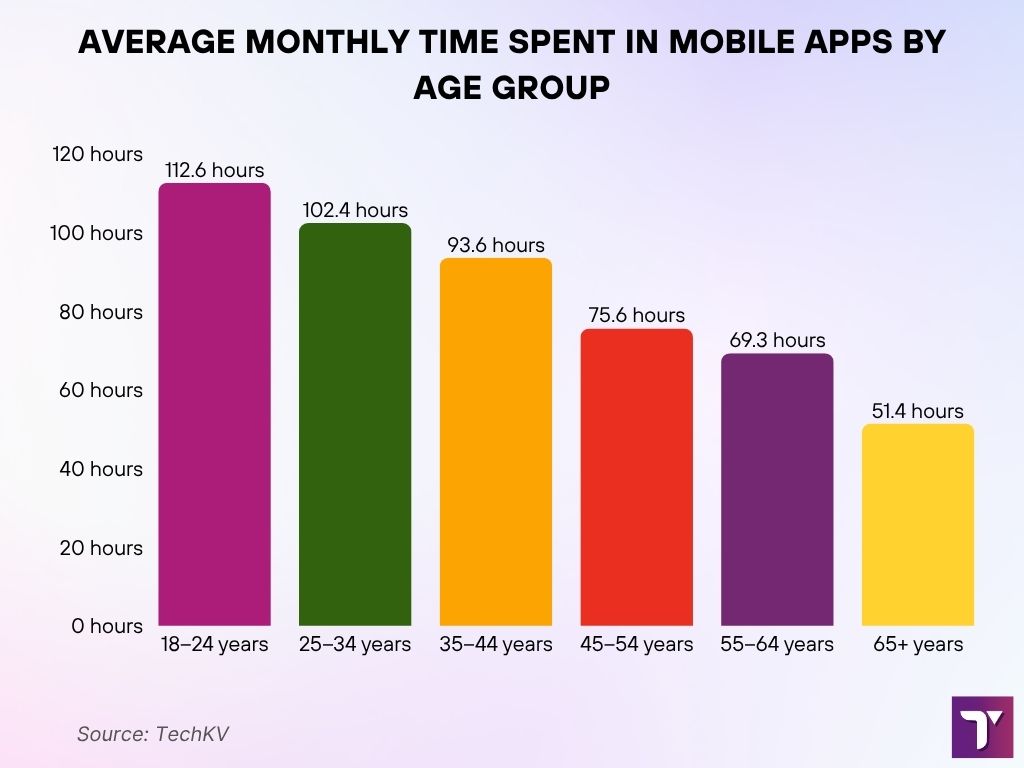
App Usage vs. Downloads
- Over 74% of downloaded apps in 2025 are deleted within 30 days, indicating high abandonment despite rising downloads.
- Mobile games remain the top download category, but only 22% show consistent weekly usage.
- Social media apps maintain a 72% retention rate, nearly matching their download rates in 2025.
- In regions like Indonesia, app usage can account for up to 82% of total device time in 2025.
- The average 30-day retention for apps is just 3.8% on iOS and 3.2% on Android in 2025.
- Push notifications boost daily usage by up to 88%, but also lead to a 43% uninstall spike if overused.
- Mobile games retain 31% of users in the first week, but drop below 7% by the second week.
- Paid apps show a 15% retention rate after 90 days, outperforming free counterparts in 2025.
- Fitness and social apps engage over 70% of users in the first week but drop to 25% by week two.
- Gen Z and Millennials are 68% more likely to uninstall apps due to slow load times or poor UX.
Top Countries by First-Time App Downloads
- India leads globally with 6.7B total downloads, including 6.55B from Google Play Store and 0.15B from Apple App Store.
- The United States ranks second with 3.4B downloads: 2B from Apple App Store and 1.4B from Google Play Store.
- Brazil saw 2.8B total downloads, with the Google Play Store accounting for 2.6B and Apple App Store for 0.2B.
- Indonesia recorded 1.9B downloads: 1.8B via Google Play and 0.1B via Apple App Store.
- Russia had 1.5B downloads in total, with 1.2B from Google Play Store and 0.3B from Apple App Store.
- Mexico achieved 1.3B total downloads, including 1.15B from Google Play and 0.15B from Apple App Store.
- Turkey saw 1.15B combined downloads: 1B from Google Play and 0.15B from Apple App Store.
- The Philippines posted 0.8B downloads, split into 0.7B from Google Play Store and 0.1B from Apple App Store.
- Vietnam had 0.8B downloads, with 0.6B from Google Play Store and 0.2B from Apple App Store.
- Egypt rounds out the list with 0.75B downloads: 0.7B via Google Play Store and 0.05B via Apple App Store.
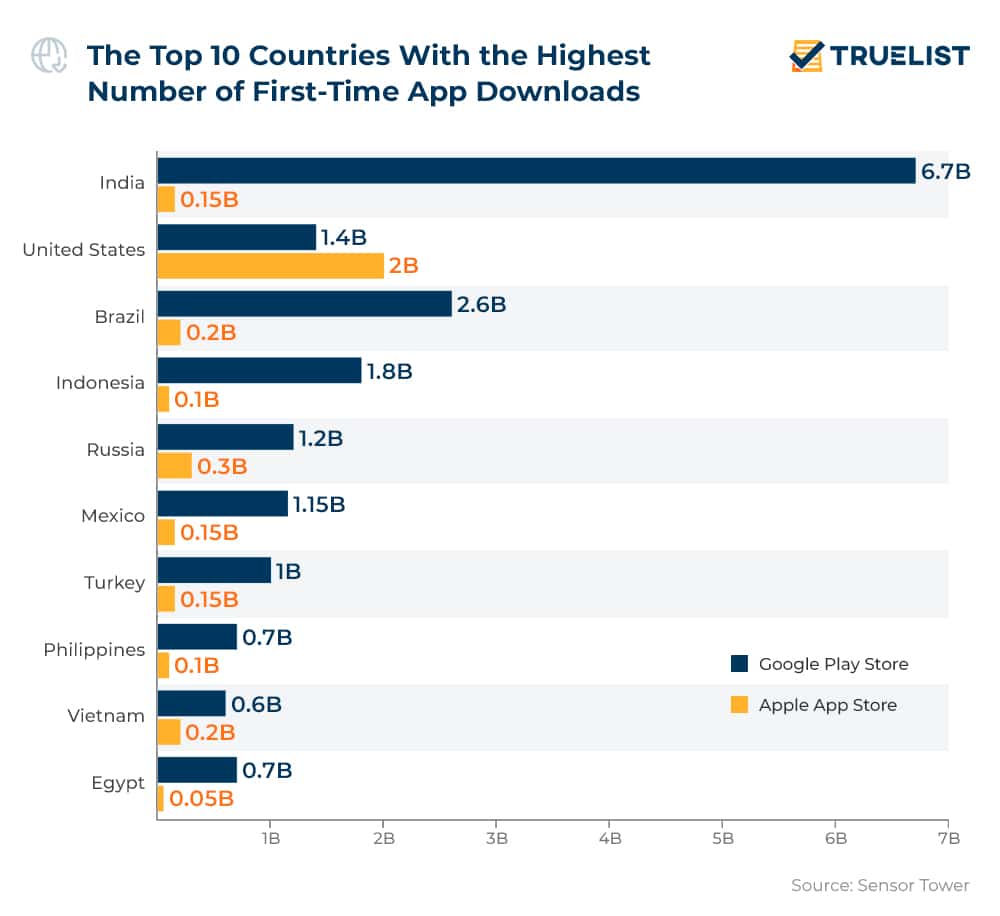
Leading App Categories in Downloads
- Games remain the most downloaded category with over 61.2 billion downloads globally in 2025.
- Hyper-casual games continue to dominate both app stores, surpassing 25% of all game downloads in 2025.
- Social media apps rank second in downloads, with platforms like Instagram and TikTok driving over 38 billion installs in 2025.
- E-commerce apps like Temu and Amazon recorded a combined 15.4 billion downloads in 2025, boosted by seasonal sales.
- Within gaming, titles such as Subway Surfers, Roblox, and Candy Crush consistently stay in the top 10 most downloaded.
- Health and fitness apps like Strava, MyFitnessPal, and Nike Training Club saw steady growth with 7.1 billion downloads in 2025.
- Finance apps, including PayPal, Venmo, and Cash App, crossed 9.8 billion downloads globally, driven by digital payment adoption in 2025.
- Food delivery apps like DoorDash, Uber Eats, and Grab had a combined 6.5 billion downloads in 2025, with strong growth in Southeast Asia.
- Productivity apps such as Zoom, Slack, and Microsoft Teams held strong with 5.3 billion global downloads in 2025, led by the hybrid work demand.
Most Downloaded Apps Worldwide
- ChatGPT topped the global charts with 55 million downloads, reflecting the growing demand for AI-powered tools.
- TikTok followed with 40 million downloads, maintaining its dominance in short-form video content.
- Instagram secured third place with 39 million downloads, showcasing strong social media engagement.
- Facebook remained popular with 31 million downloads, driven by its broad user base across age groups.
- WhatsApp recorded 28 million downloads, reinforcing its status as a top messaging platform.
- Temu, the shopping app, had 26 million downloads, highlighting its growing eCommerce appeal.
- CapCut reached 24 million downloads, favored for its easy-to-use video editing tools.
- Threads, Meta’s Twitter competitor, saw 22 million downloads, indicating rising user interest.
- Telegram garnered 21 million downloads, continuing its growth in secure messaging.
- Snapchat rounded out the list with 18 million downloads, still popular among younger users.
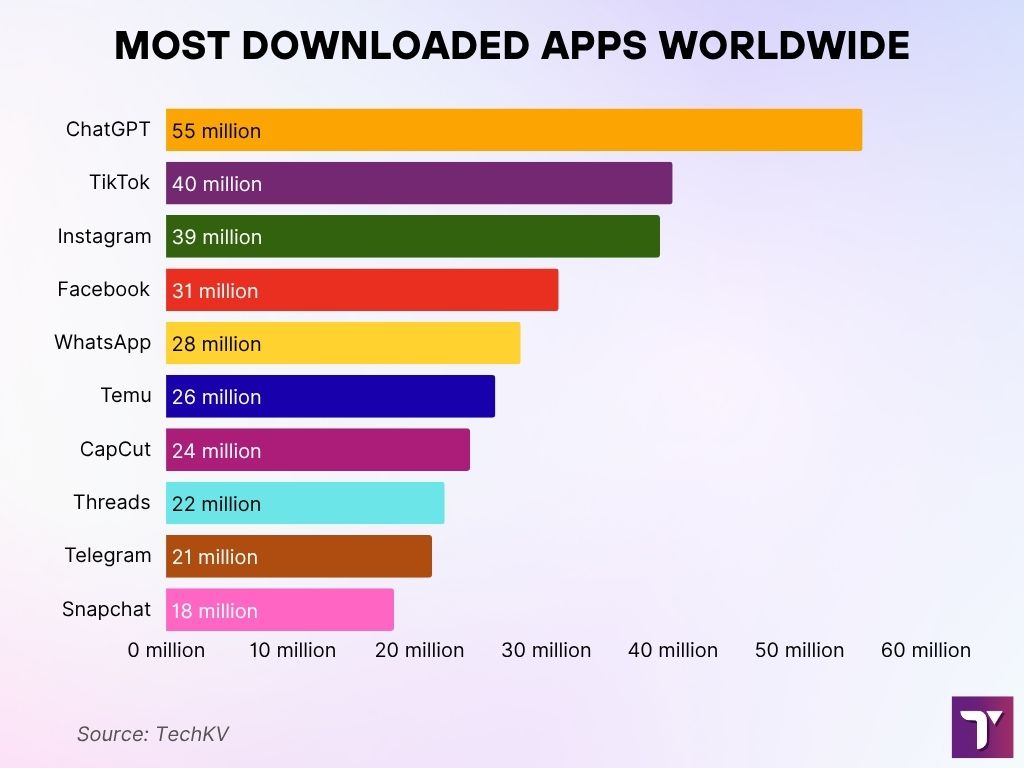
App Monetization and Its Impact on Downloads
- Apple’s App Store generated 64% of global app revenue in 2025, despite fewer Apple devices than Android.
- Free apps remain the largest revenue driver, accounting for over $146 billion in ad and subscription earnings in 2025.
- In-app purchases outperform paid downloads, contributing $108 billion in monetization across all categories in 2025.
- In-app advertising revenue reached $389 billion globally in 2025, making it the top monetization stream for mobile apps.
- The freemium model continues to dominate in 2025, used by over 72% of top-grossing apps to balance access and income.
Why Millennials Download Retail Apps
- 54% of millennials download retail apps because they are easier to use than mobile sites.
- 27% are motivated by discounts or lower prices available through the app.
- 4% say it’s mandatory to purchase the product via the app.
- 2% download apps to shop while not on a computer.
- 13% cite other reasons for downloading retail apps.
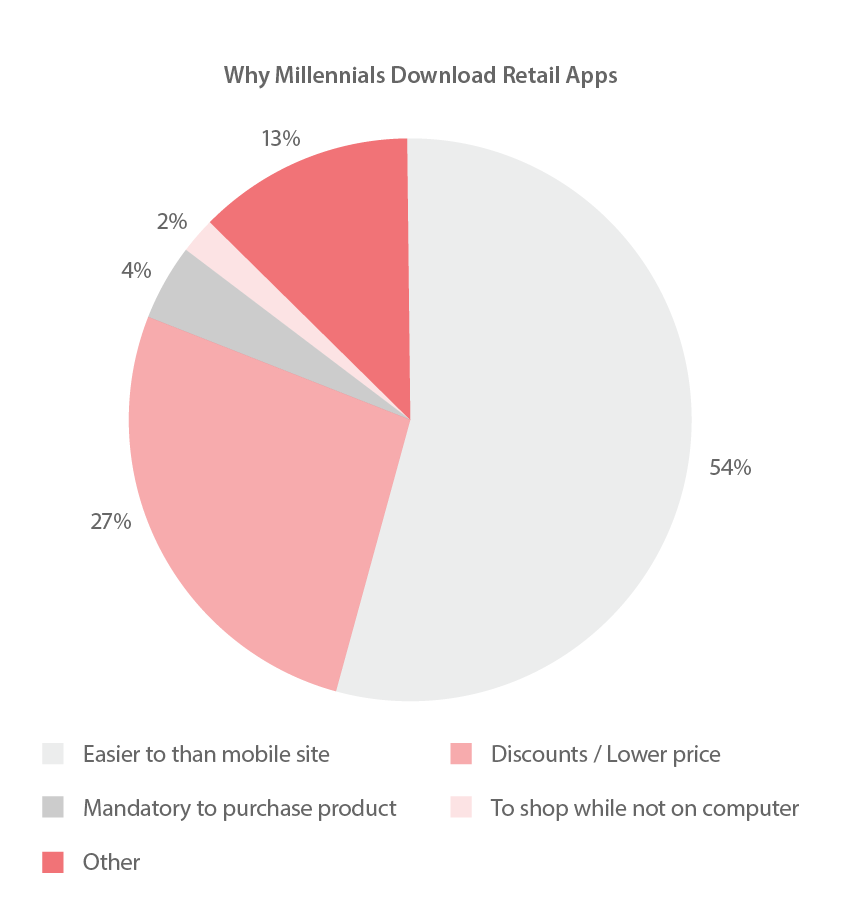
The Future of App Download Trends
- Global app downloads are expected to hit 366.2 billion by the end of 2025, continuing a steady year-over-year rise.
- The rollout of 5G and improved network access is projected to boost annual app downloads by over 9% globally in 2025.
- India and Southeast Asia saw a 14% increase in downloads in 2025, driven by a surge in smartphone adoption.
- AR and VR apps contributed to 6.8 billion downloads in 2025, fueled by immersive tech in gaming and shopping.
- Apps powered by AI and machine learning saw downloads rise by 11.5% in 2025, especially in productivity and health categories.
- Super apps gained momentum in 2025, with platforms like WeChat and Grab experiencing a 19% increase in usage and downloads.
Mobile App Usage Among U.S. Broadband Households
- Smartphone users downloaded an average of 3.2 apps in the last 30 days, compared to 2.5 apps for tablet users.
- On a monthly basis, smartphone users used an average of 6.6 apps, while tablet users averaged 5.0 apps.
- Only a small number of apps were paid or subscription-based: 0.3 apps for smartphones and 0.2 apps for tablets.
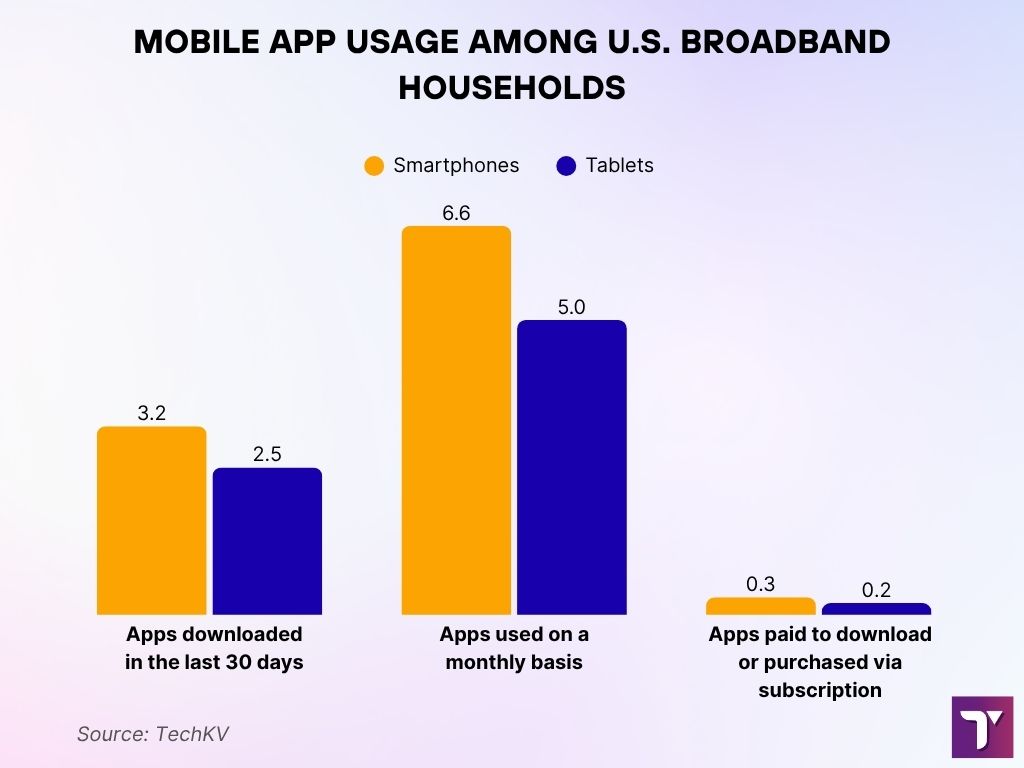
Conclusion
As you have seen, the world of smartphone apps has only grown in the past decade. As one can understand from market estimates, the number of downloads will only increase as technologies like AI, VR, and AR are set to take the stage. However, whether these ideas will be reflected in the desktop sector is a question that needs to be answered over time.
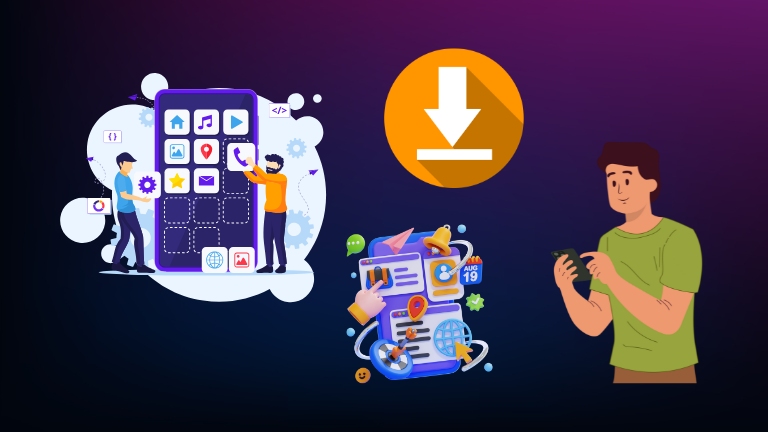
1 Comment
It’s crazy how many apps people download these days.